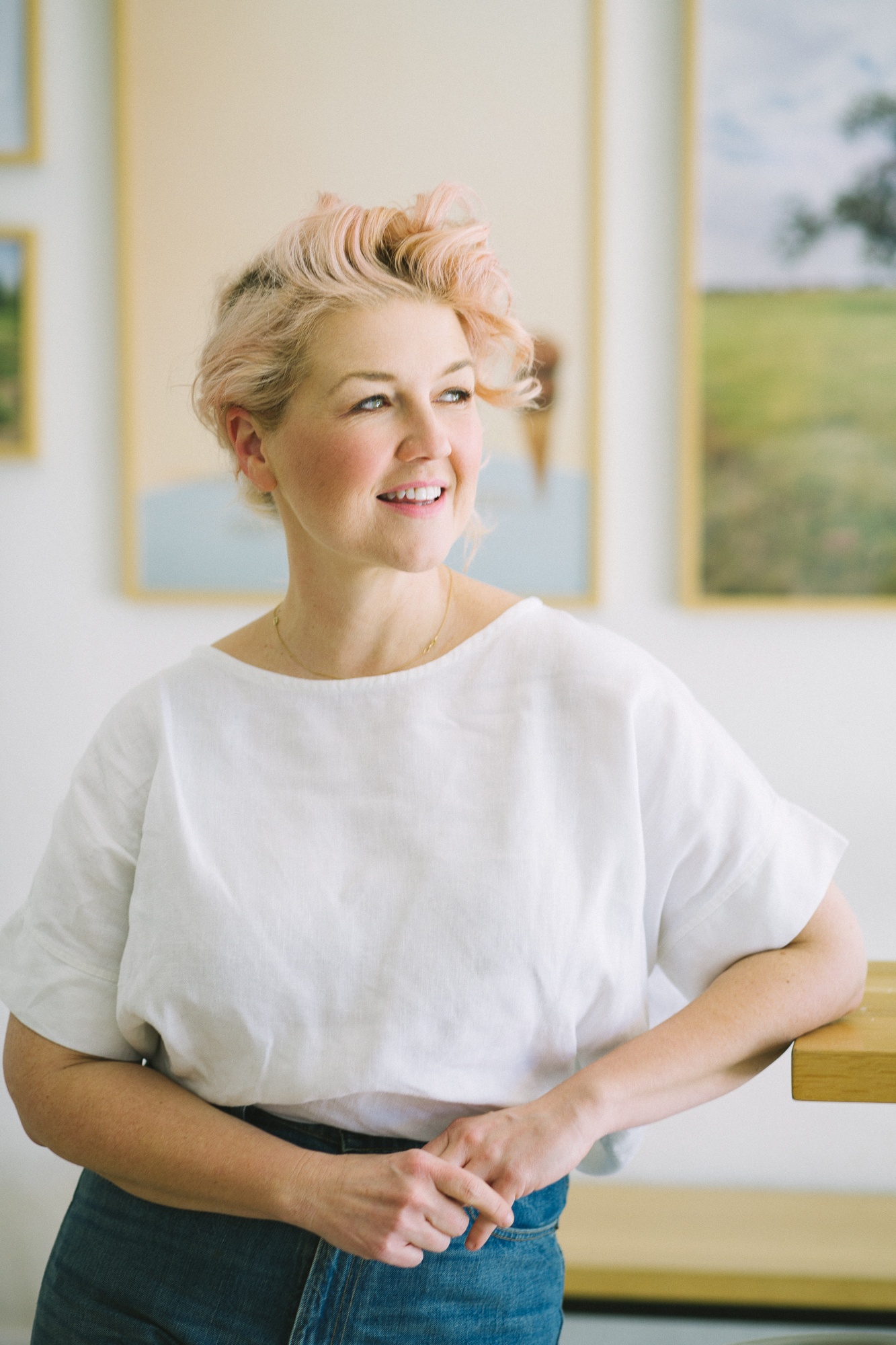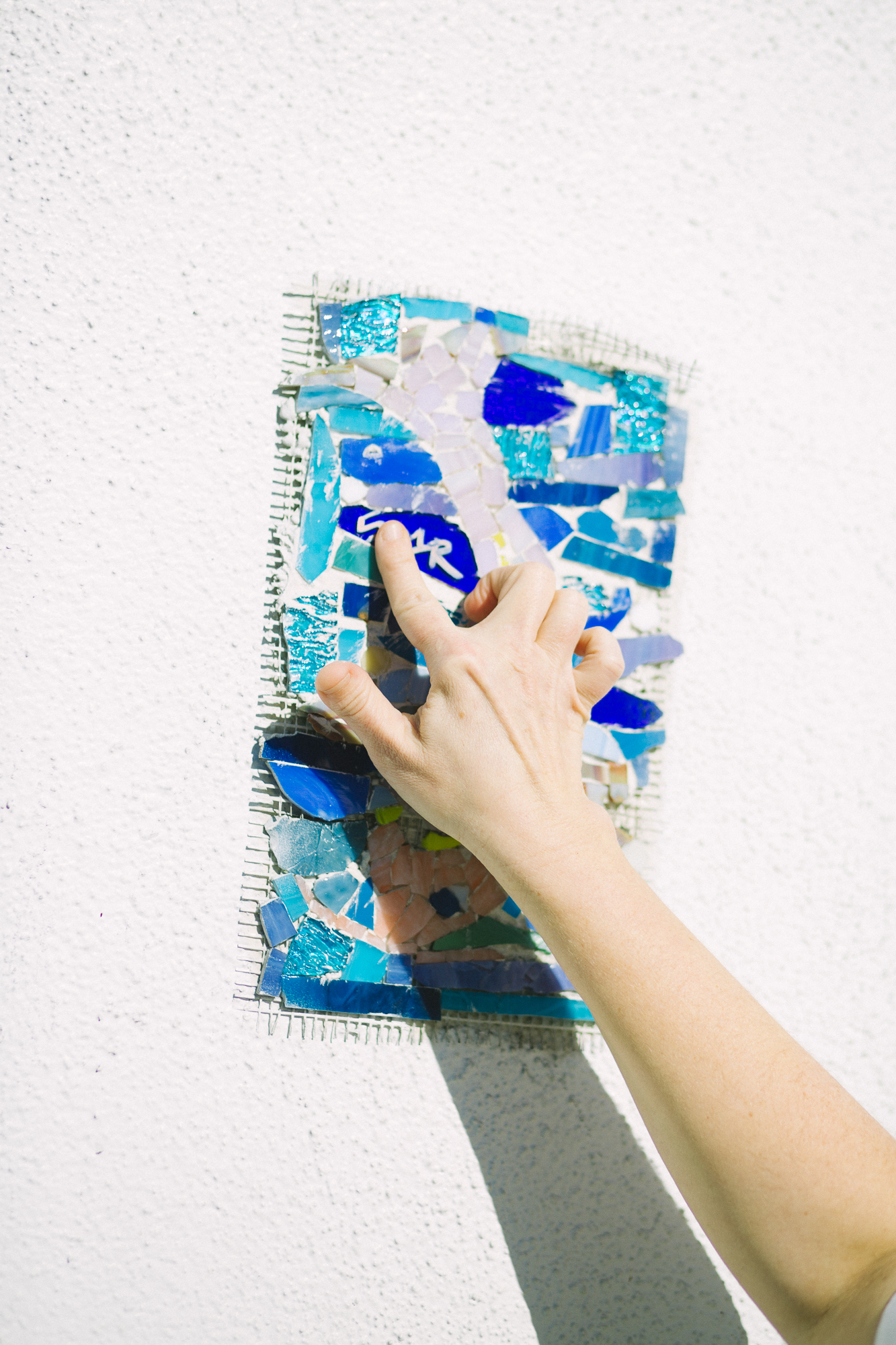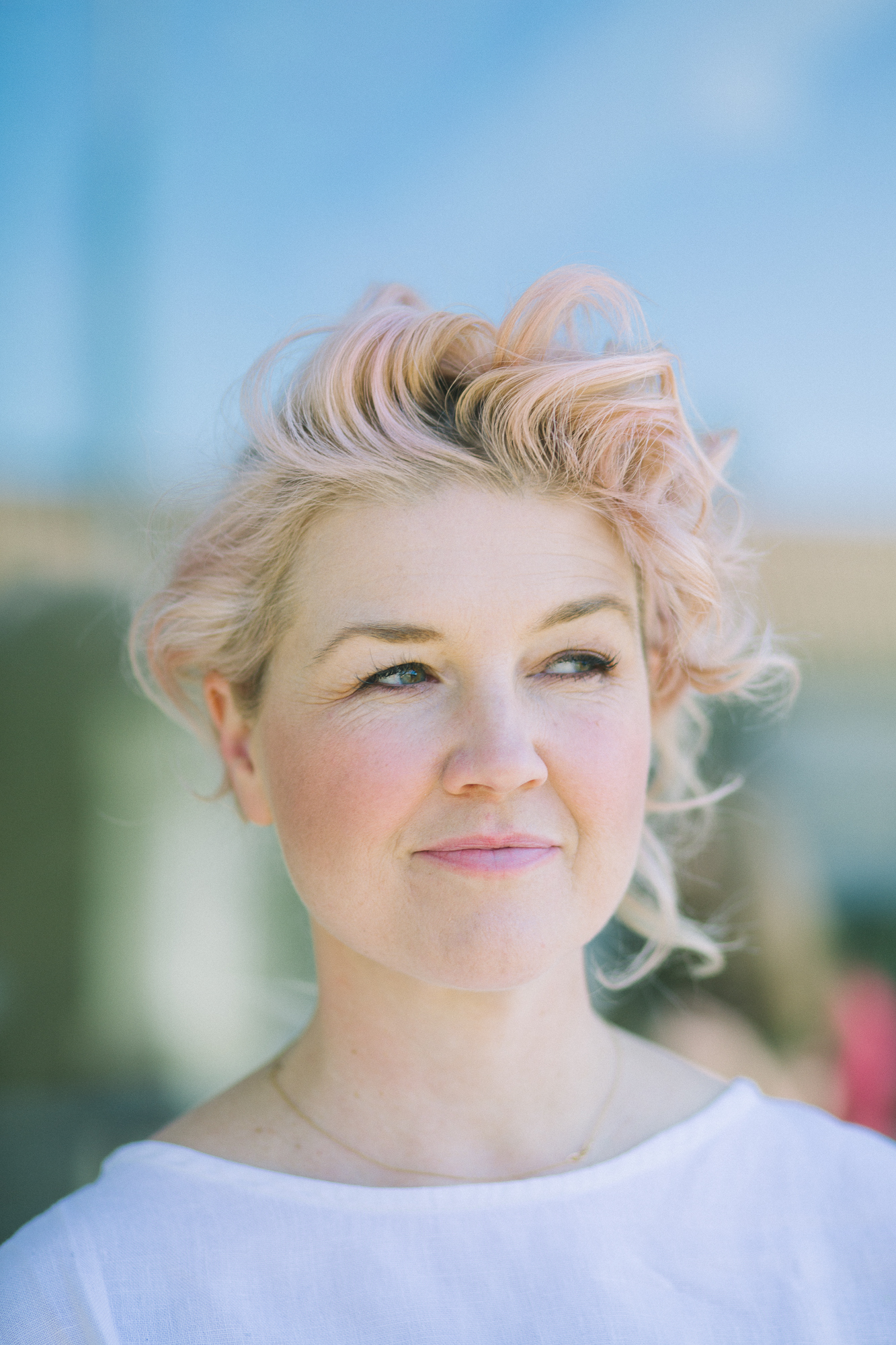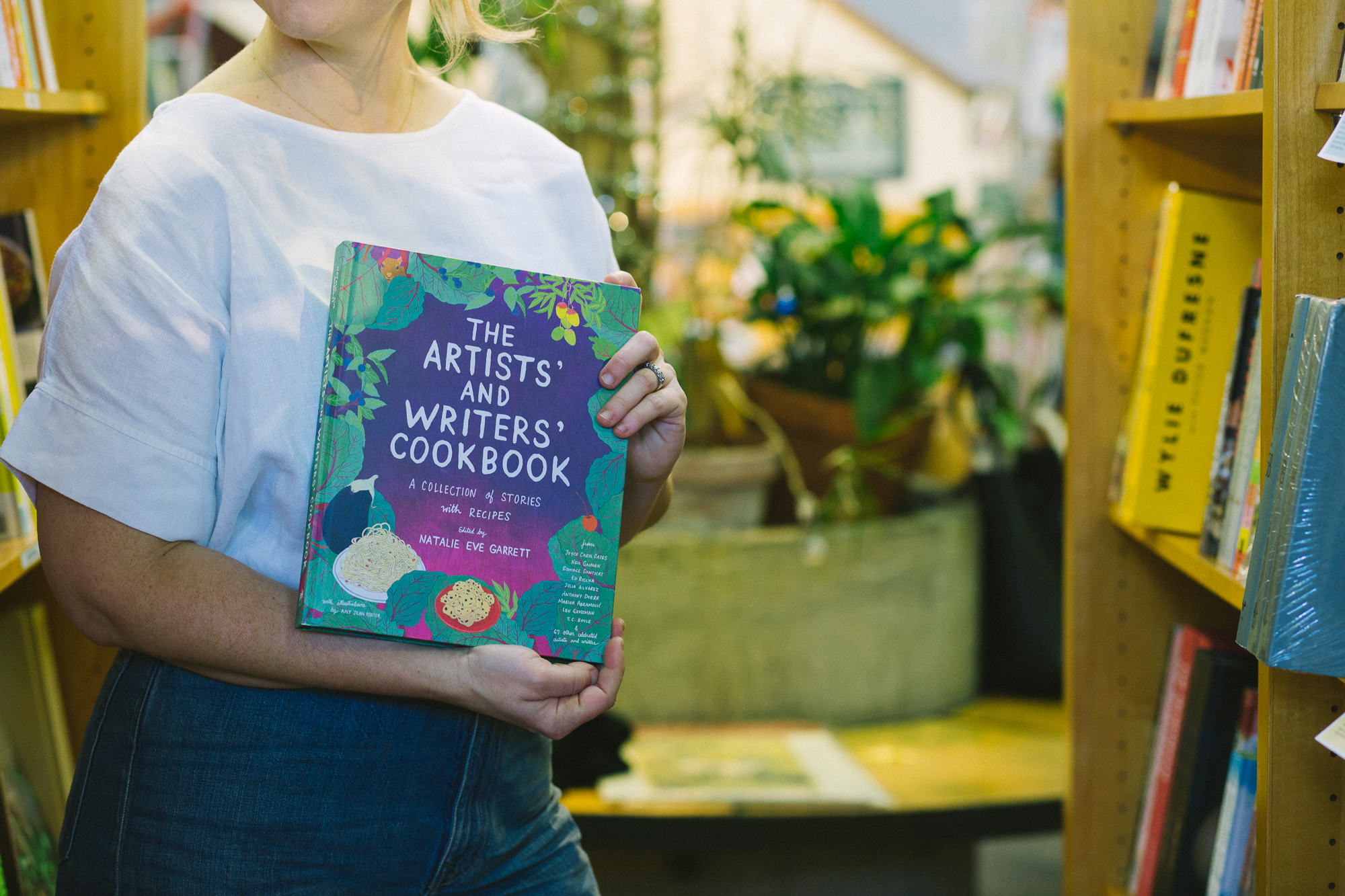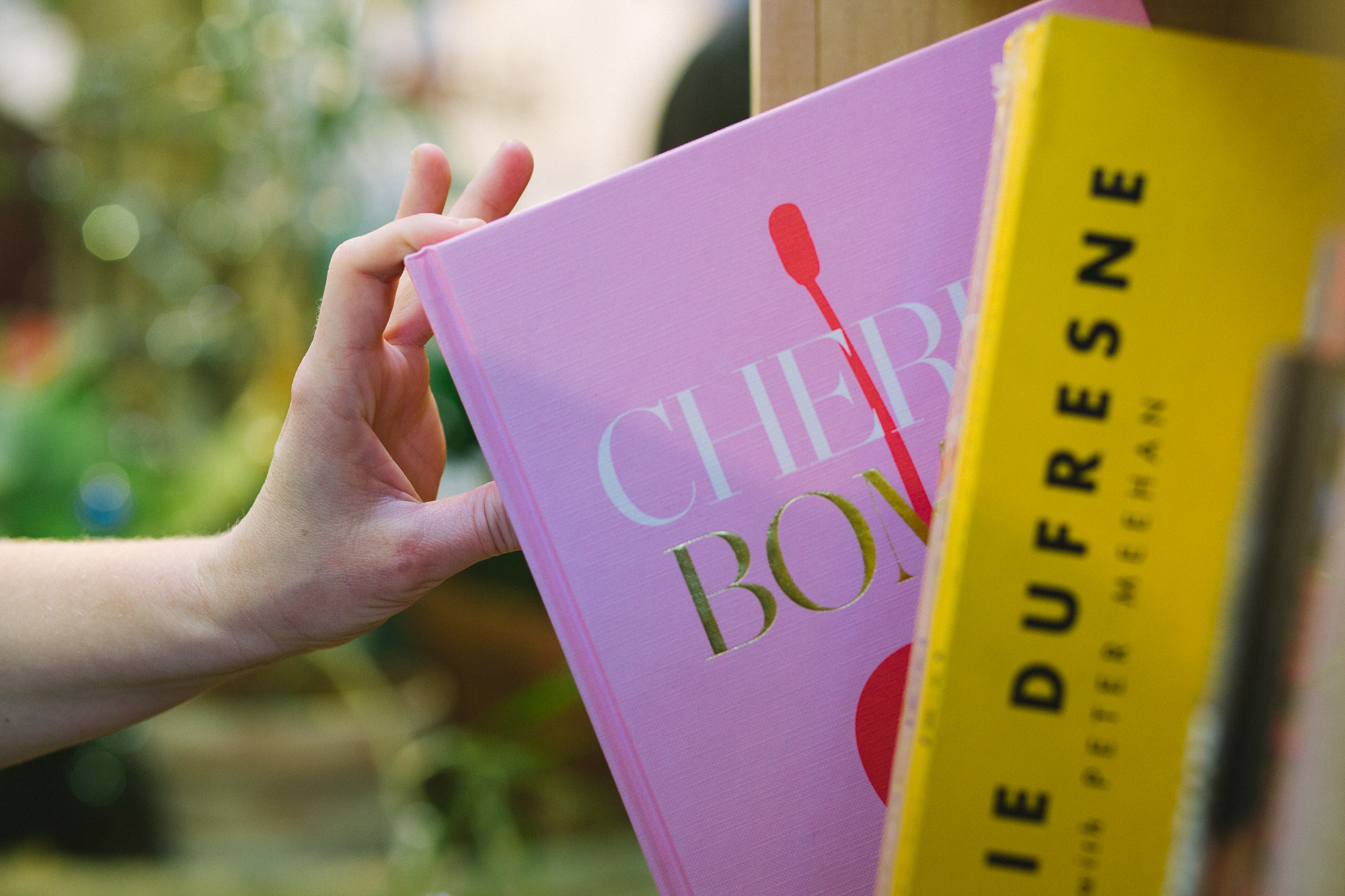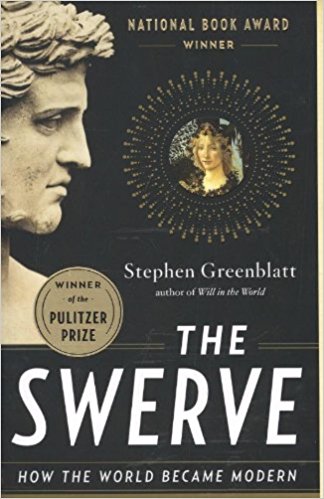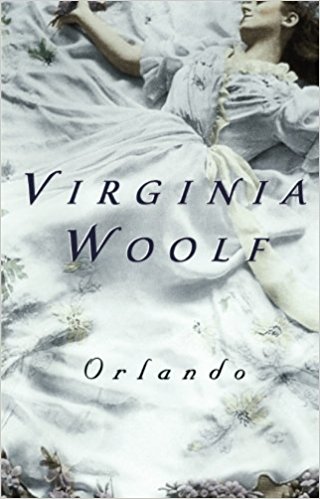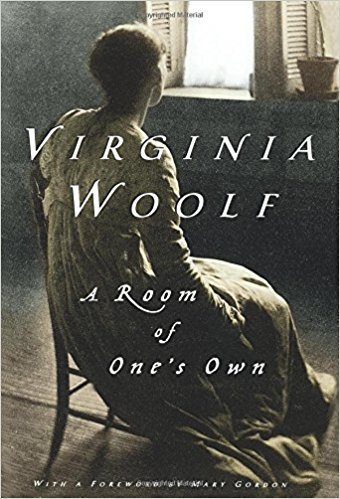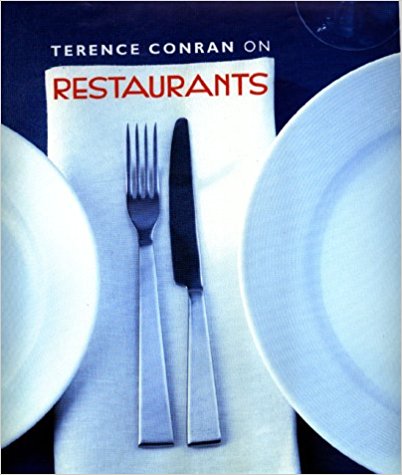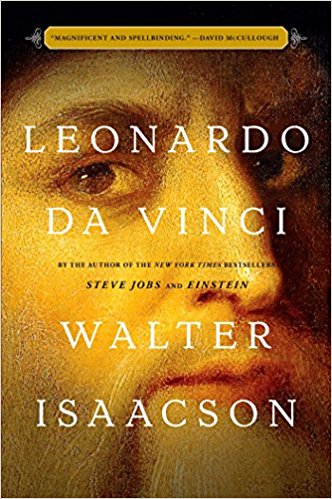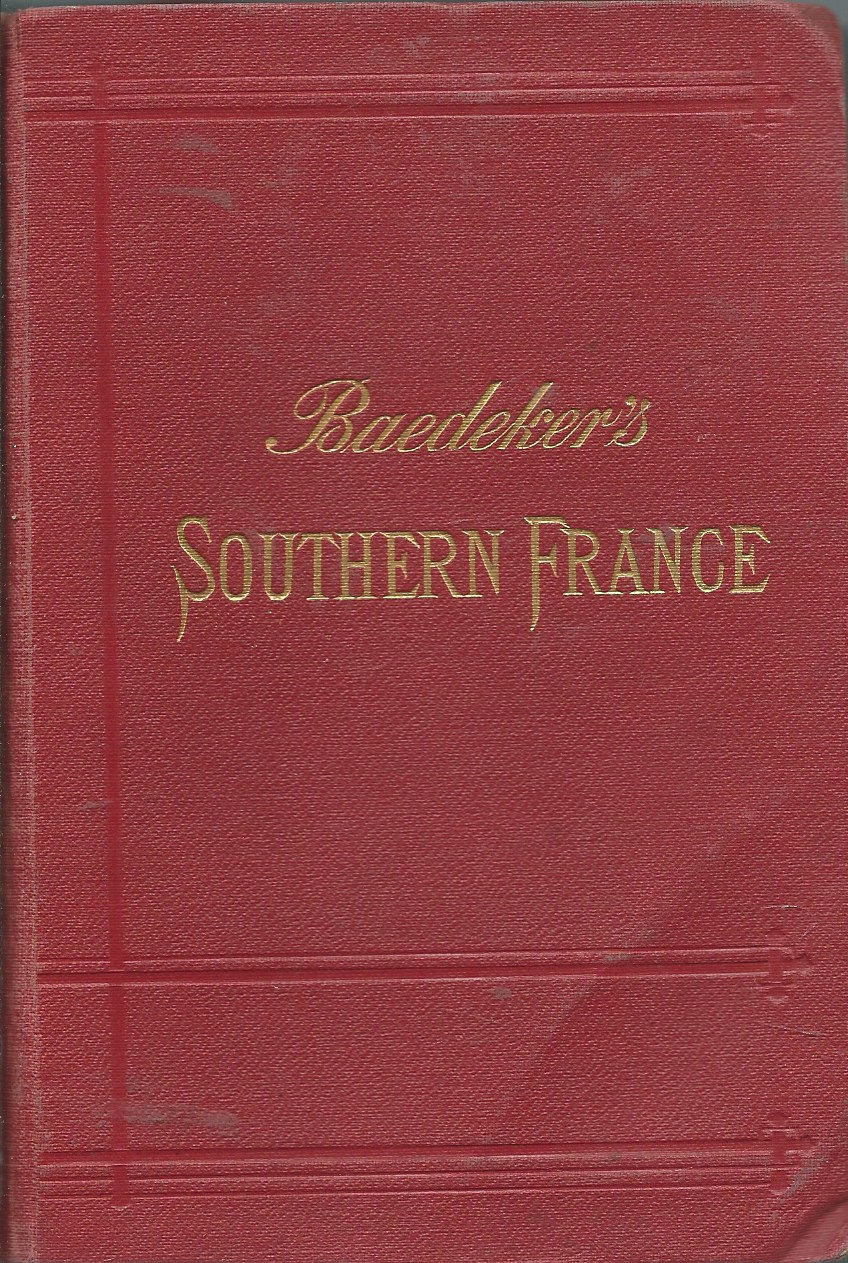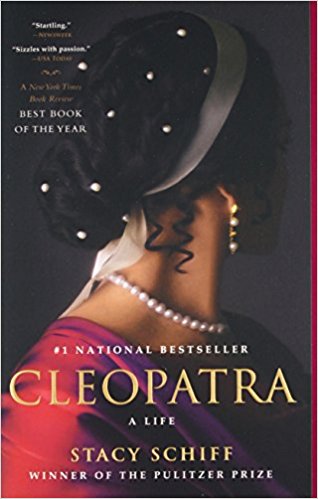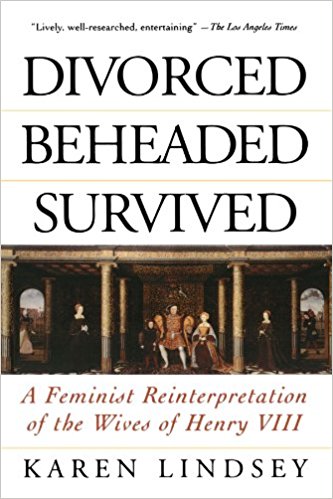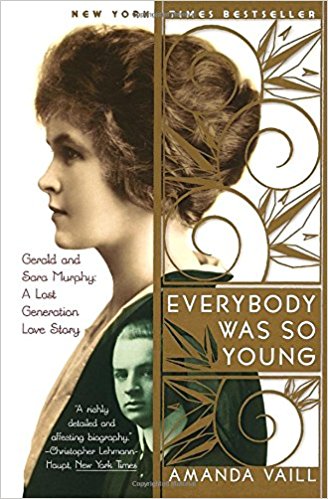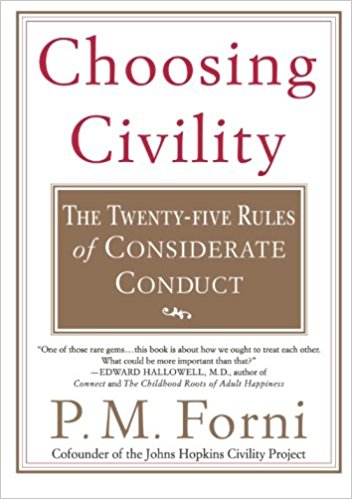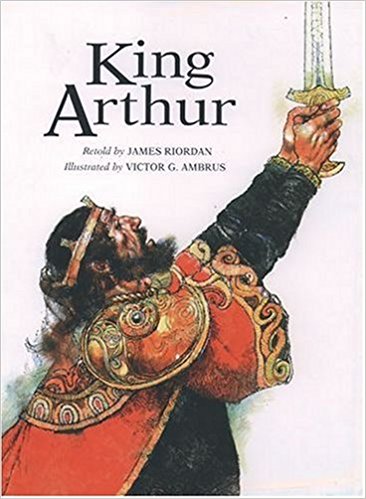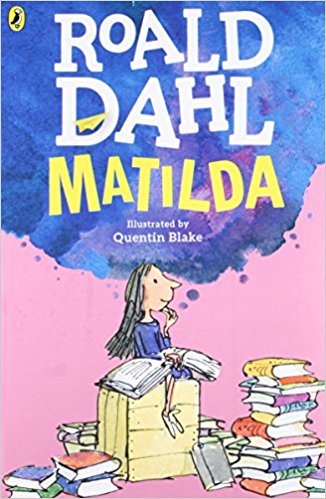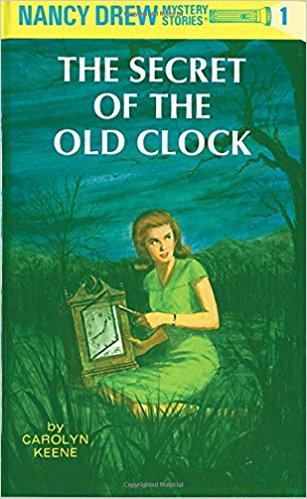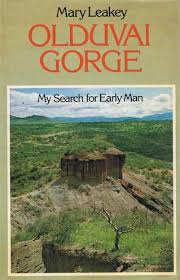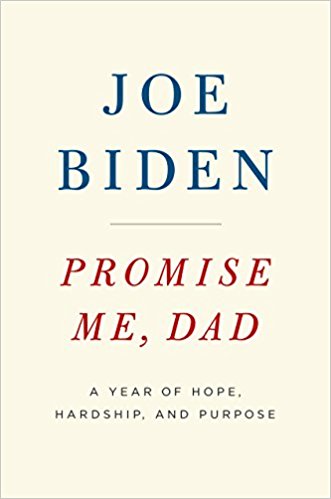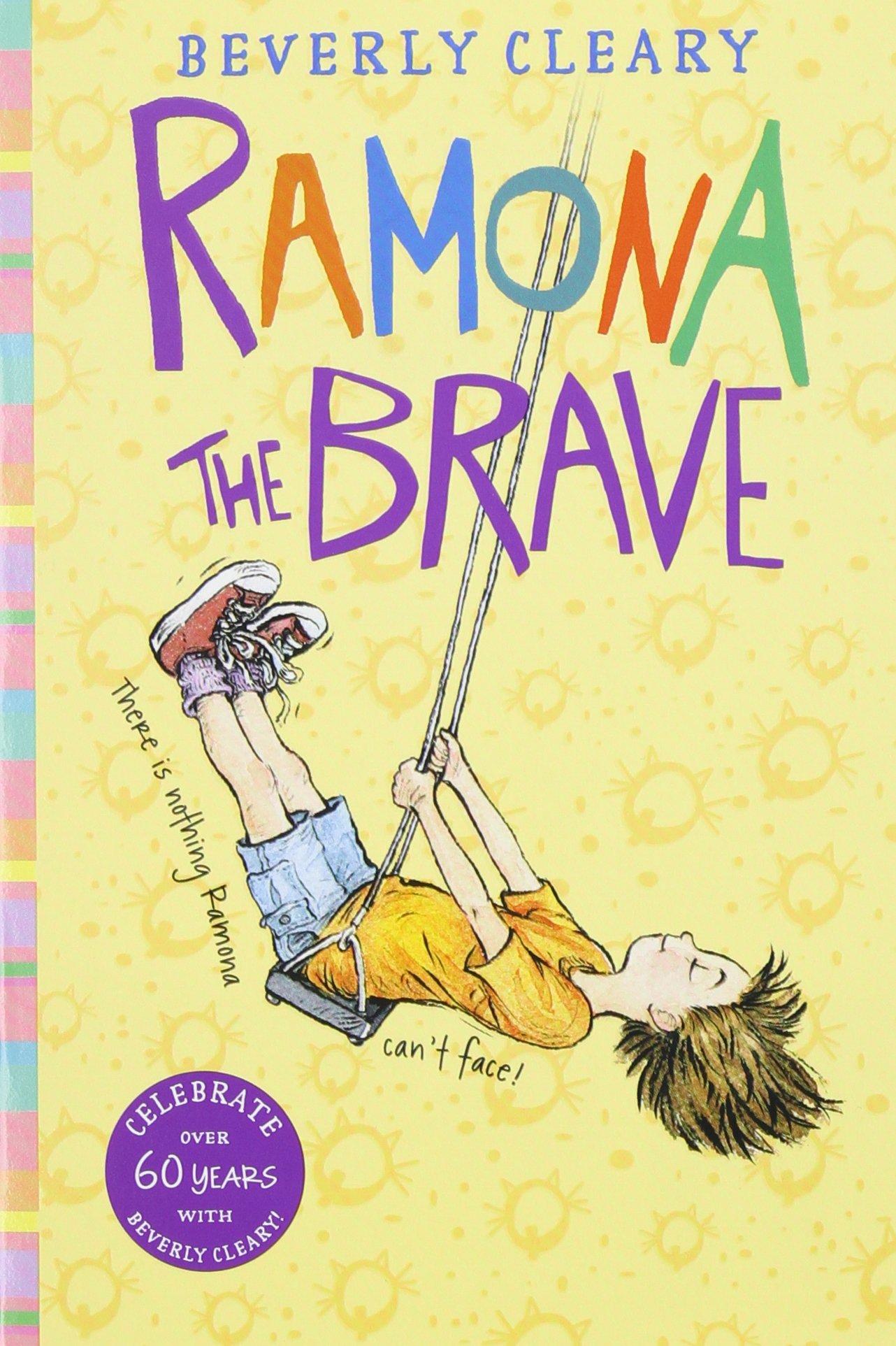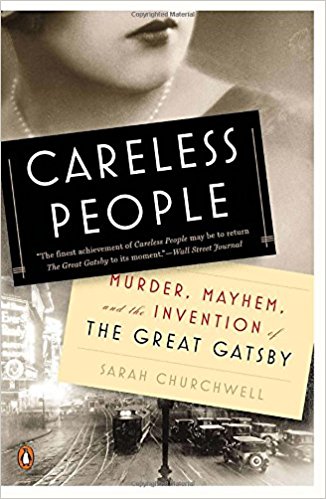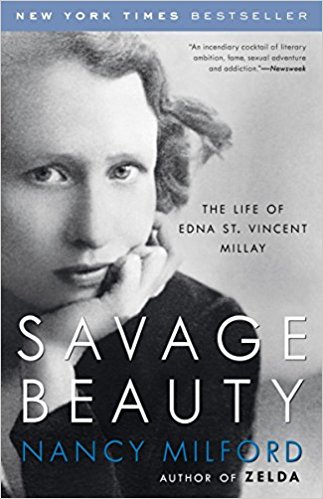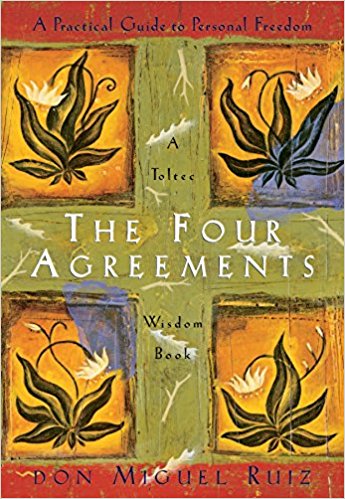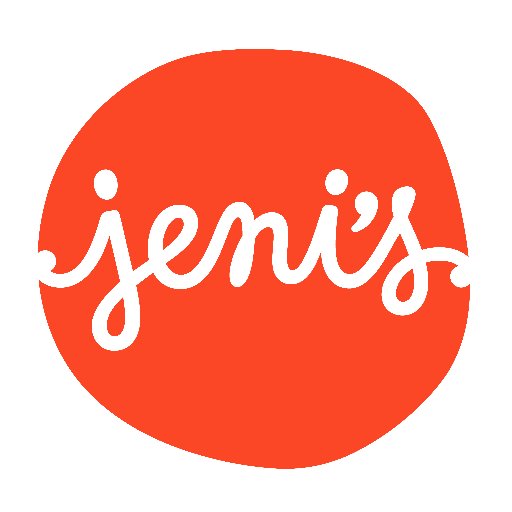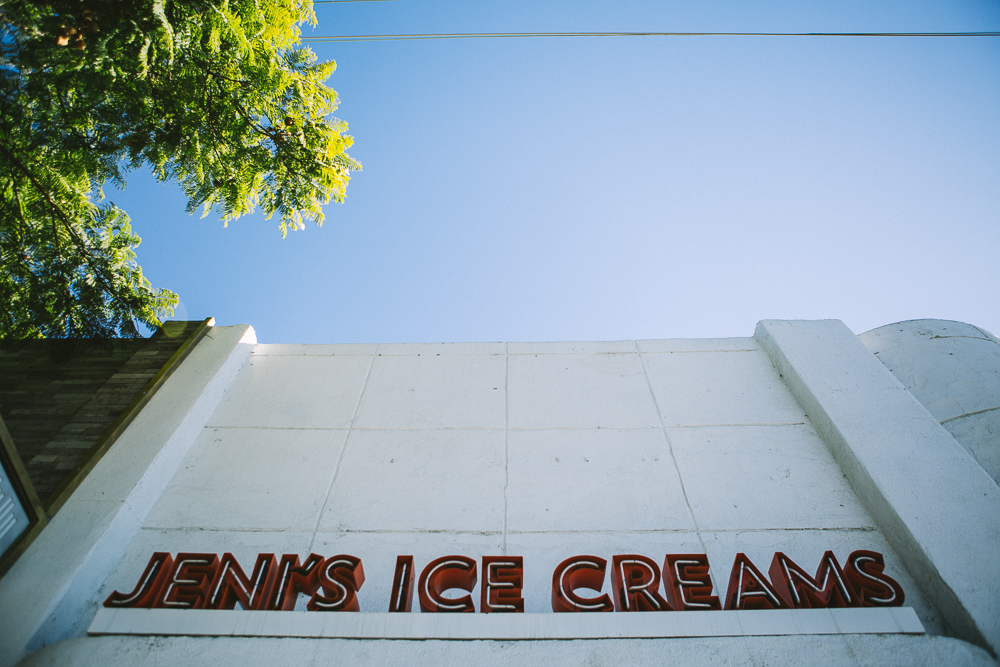
Jeni Britton bauer
Photography by Lauren Pisano
Meet the woman behind the deliciously creative flavors of Jeni's Splendid Ice Creams: Jeni Britton Bauer! Besides owning thirty ice cream stores across the United States plus supplying homes across the world with her pints, Jeni is also the James Beard Award-winning author of two cookbooks. Not only does Jeni create a remarkable product itself, but the way she runs her business is a lesson we can all learn from. Her mission is clear and true: customer service is an art, it's all about her community and partners (the responsible farms and purveyors she works with for her ingredients), and joy is found through creating flavors and a retail space that makes people happy.
Girls at Library: What was the name of the first book you fell in love with, that turned you into a lifelong reader?
Jeni Britton Bauer: King Arthur by James Riordan, illustrated by Victor Ambrose. It was gory, and didn’t shield a little girl from the horrors of battle. I loved it. I really loved it. I loved that King Arthur fought for good. But it was never easy. The legend has it that he believed in might FOR right, not might IS right and I have always followed that sentiment. Also, a round table, that we are all in this together. It really stuck with me.
I would say that I am a lifelong experience gatherer more than a lifelong reader. I have never really considered myself a very good reader. I read to gain experience and knowledge and emotion and perspective. I am terrible at artful literature, though I love Kazuo Ishiguro and Virginia Woolf. I am curious about literally everything and in a hurry to soak it all up. But each time I pick up something new it turns me to mush and I realize how very little I actually know.
That said, I love to read. I love to be transported. I love to get all the way into it.
GAL: What is the power of story? Describe some ways in which fictional narratives have impacted you and your life.
JBB: I like to say FLAVOR IS EVERYTHING. I use the word flavor to refer to character. Who you are is who you want to be. What you surround yourself with. Your vision. Your bookshelf. All of it. It all starts with what you believe is possible. I am constantly creating narratives and writing myself into the story. My whole life is about a quest, very much like the fictional quest of Bilbo Baggins or Frodo. Or Luke Skywalker, or Athena: the goddess of craft, skill, strategy, warfare! I’m on an adventure! And I will never let up. I want to squeeze every drop out of my brain, body and heart while I’m here.
GAL: What are you currently reading?
JBB: Leonardo Da Vinci by Walter Isaacson I hate that the world was so cruel then, and still is. But I love that Leonardo was able to live his best life in spite of it.
Promise Me, Dad by Joe Biden, a man who inspires me to be a better human every day — and that brings me the greatest joy I think a person can have. I can’t imagine a better and more fulfilling quest than to acknowledge how imperfect you are, and be actively working on becoming the person you believe you are and impacting the world in your own special ways. There is no other happiness. And Joe (and also LeBron James) and others keep me focused on that.
GAL: Do you have a forever favorite book?
JBB: No, I just depends on what I need at the moment.
I go back to The Fellowship of the Ring a lot. Although, it isn’t because I enjoyed reading the book. I didn’t really. I just really love the story. And I take a lot from it in my life. Lessons in leadership, fellowship, humility. All comes from Tolkien. I do actually like Tolkien’s spoken story style, although I don’t enjoy reading it. I imagine him telling me the story and I read it aloud to my son.
Or Virginia Woolf's A Room of One’s Own. I am never far from it. I have multiple copies.
And I would add that in the beginning of my career when I knew little about anything and was curious about everything I would go to the library and find answers. One book that I went back to for years is Terence Conran’s book on restaurant design. That book, which I stole from the library and eventually replaced, was my foundation for interior space design, but more than that, it contributed to the vision I had of who I would become. Respected for quality, art and design. Books are so important for young people making their way in the world. Especially young people without the advantages of some others, but with big dreams and hopes.
“I think, as a woman, it’s important to find other women and people throughout history who have bravely fought and advanced humanity.”
GAL: What strong female characters have influenced you?
JBB: In my early days I loved Laura Ingalls Wilder. I always identified with her pioneer spirit. And Ramona Quimby. I was shy and introverted, but a very tough and scrappy kid. I moved almost every year while growing up but no matter where I moved I found that my friends were always at the library: Ramona, Laura, Matilda, Nancy Drew. It was my constant in a stormy life. And all the people of history who I loved were there, too. The library has always been my place of belonging.
I am mostly inspired and influenced by real life characters through their incredible biographies like Zelda Fitzgerald (multiple bios and works, Sarah Churchill’s book on Scott and Zelda is great), Sarah Murphy (Everybody was so Young), Cleopatra (that biography!), Eleanor of Aquitaine (multiple bios), Mary Leakey (Olduvai Gorge: My Search for Early Man). Marie Antoinette in her own way (multiple bios), Edna St. Vincent Millay (Savage Beauty, by Nancy Milford). I look to the wives of our forefathers, even in reading the bios of them. And women like Elizabeth Cady Stanon. Also, I loved the book Divorced, Beheaded, Survived: A Feminist Reinterpretation of The Wives of Henry the VIII — the story of survival in that world was beyond imagination.
I think, as a woman, it’s important to find other women and people throughout history who have bravely fought and advanced humanity. In general, I go to people like Elizabeth Cady Stanton, Frederick Douglass, and MLK Jr. as the second round of American hero’s after the Founding Fathers. I side with the idea that our founding fathers did what they could then and understood that America would be shaped slowly toward freedom for all as we progressed. As such, I look to those people as even more important in many ways.
GAL: How often do you read?
JBB: Daily.
GAL: Who is your favorite author?
JBB: I don’t have one. I don’t read a lot of fiction, so I don’t have a go-to there.
But I have read a couple of Walter Isaacson’s now - he is so loving and thorough toward his subjects.
I do love Virginia Woolf. I have read most of Hemingway and he inspires me most when I write about ice cream: “all you have to do is write one true sentence”. Anyone who writes will tell you how daunting that can be.
“One little book, a pencil in the margins “Left Nice June 20 Saturday 1925, very hot.” And I am off on an adventure.”
GAL: We have a friend who has a “Sanity Shelf,” which is dedicated to books she returns to again and again to read for pleasure, knowledge, and solace. What would be on your shelf?
AC: Choosing Civility by P.M. Fourni and The Four Agreements by Don Miguel Ruiz. Both easily pop me back into perspective and I give the latter to every 16 year old I meet.
And I love to go back to The Swerve by Stephen Greenblatt because it was such an incredible adventure for Poggio and jumping into the book is like jumping through the chalk drawing in Mary Poppins, or climbing through the wardrobe, only it’s history. It’s a real man, and real events. I have gone back to this book many times. I can open it to any page and start reading.When I finished the book I was so upset that I started it over again immediately. I wasn’t ready to leave yet.
And the kitchen manual for the Pennsylvania Railroad, 1947. It’s a manual for the chef and workers in the kitchen. But you can learn so much from it about the time. When I read it, I get close to time travel. I could say that I don’t really “read” it, I imagine it. They stopped and bought produce along the way. They ate fresh mixed greens and endive. They didn’t use bagged lettuce like we do today (awful). They made dressings. Only the head chef was allowed to make coffee (weird). They cut the crusts off white bread, and plated simple cheese sandwiches so elegantly (cut into threes or fours and plated on lettuce leaves). I like that simple, but elegant approach. And the strawberry pie with zwieback crust. It’s a mainstay in my house. It was made with fresh berries. I love to imagine the time aboard the train back then, and then recreate the meal. I have read it, wire-bound cover to cover, many times. Back then they relied more heavily on the instinct of the team. Today, we’d have to process the lettuce in one place, and create a photo gallery of which leaves were acceptable for the plate, and how precisely to plate it and still it would never reach our standards. But these people didn’t need all that. And I bet it was pretty great all the time.
Also, I have a Baedecker’s guide to Southern France from 1914 with notes from an American woman traveling in Nice in 1921. There weren’t many, so I imagine it was Sarah Murphy. I love to look through it. It’s a small, thick red linen covered book with gold inlay cover. It fits perfectly in your hand. I love to own it. There are maps and restaurant recommendations. It’s a treasure. I imagine the 19-teens was similar to what we are living right now. We are right at the precipice of something altogether new. There is a break, completely, with the past. Older generations vs. younger in a way that changed the world forever. I mean, aside from WWI, cars changed everything. No one knew how to handle that or what to do with it. There was a car track for racing in the middle of Atlanta back then! I mean it was a big deal. This book is from that important time. And - I often wonder - what would have happened if the world had been allowed to progress. I mean, by 1918 young women had stolen their power away from their Victorian grandmothers, and were owning it. What if the depression had not hit, or WWII, or the 1950’s? Maybe the early 20’s was the most modern and daring we ever were in the 20th c. Anyway, this is what I do. One little book, a pencil in the margins “Left Nice June 20 Saturday 1925, very hot.” And I am off on an adventure.
I also have many early and rare ice cream books from that era. Of course.
GAL: Where do you read? Do you have a favorite reading spot, or can you read anywhere?
JBB: I read in bed. In a fancy nightgown, with my kids. Every night.
GAL: How do you choose the books you read?
JBB: I wander the library. I love to be at the library. I pay attention to what Amazon recommends for me. And the New York Times Book Review. And sometimes I read what others suggest, although not nearly enough (almost never).
GAL: Do you prefer holding a book to devices? Or do you use a device?
JBB: I often buy three of the same book: the paper book, kindle, and audible. I have read three books this way. It’s great. In general I like to hold the book, but I like the features of my kindle and more and more I like that it’s lightweight so when I am traveling or in bed, it’s not too heavy. If I’m on a long drive I’ll listen to a book.
Sapiens was read this way - half audible and half hardcover. And Da Vinci is going that way, too. It’s good to have the book in hand to refer to the images. But also, sometimes I absorb information better when I read it, and other times it’s best for me to hear it, like after a long week on the road when I’m journeying back home.
GAL: Your company has strong ties to community and a sincere dedication to utilizing responsible food making processes. How do you keep up with the trends and traditions of modern farming and food crafting?
JBB: Not from books, usually. I do from being on farms and knowing our growers. I also don’t keep up with trends. I prefer to keep a close watch on what is happening around me and, frankly, I use literature and history to tune out trends. I need solitude to keep creative. I have a very active imagination, and I only want to fuel that. My imagination is so strong that I can sometimes confuse it with reality. I want to time travel. I actually spend time meditating deeply sometimes trying to free my emotional self from my physical body and traverse space and time. It takes a lot of practice. For instance I don’t read history just for the events or the story. I read it for the details that will help me feel it. Like, what fabric Zelda’s dress was made out of? How much butter did her mom use in her favorite biscuit recipe? I will research it so that I can get closer to her. Food and flavor can help, too!
And that’s how I come up with how I approach my ice creams or whatever project I’m working on at the moment.
GAL: If you were to write your memoir, what would you title it?
JBB: Flavor is everything -
GAL: Please name three books you recommend reading, and the reasons for your choices.
JBB: If you haven’t read Orlando by Virginia Woolf then I would suggest jumping into that novel. It’s stunning. Transportive. I love the story. The scene of the Russian river is something I can imagine if I’m just on a plane chilling out after a long day to meditate my mind off of whatever else. It’s incredible. Every word is perfect.
Sapiens - I loved this book. If you sometimes struggle with perspective. Read this.
I’ll go to The Swerve by Stephen Greenblatt. I loved it.
“I never take a bite without actively thinking about how wonderful it is. Nothing brings me into the moment like ice cream.”
GAL: Please pair 3 of your ice creams with three of your favorite books or characters.
JBB: Put a scoop of Ndali Estate Vanilla on a cone and imagine you are having ice cream for the first time just like Anne in Anne of Green Gables. She calls ice cream “one of those things that are beyond imagination.” It’s fun to think about yourself in that moment, wondering: “What if I never had ice cream before?” I never take ice cream for granted. The first moment the cold hits my tongue and I feel the creaminess, taste the sugary sweetness, and then the scent of the vanilla and cream makes its way to my nose. I never take a bite without actively thinking about how wonderful it is. Nothing brings me into the moment like ice cream. Unlike most of us, Anne gets to experience this for the first time when she is old enough to remember. Try it. You’ll never see ice cream the same way again.
Pick up any Roald Dahl story (I love them all) and pair it with Brown Butter Almond Brittle. This ice cream will actually get you closer to Dahl as a child because it’s based on his favorite ice cream. In Boy, Dahl writes of giant seafood feasts at his grandparents house in Norway. Every meal would end with a mountain of homemade ice cream with burnt toffee pieces, known as krokan. When we first made this flavor it sold out online quicker than we had expected—word travelled in the Norwegian American community and I got emails about how it took people back to their childhoods. Fun to think about young Roald enjoying a similar flavor!
The imagery in Virginia Woolf’s Orlando goes perfectly with Goat Cheese with Red Cherries ice cream. Especially this moment where Orlando desperately searches for the right words to describe his love for Sasha, but fails. “Snow, cream, marble, cherries, alabaster, golden wire? None of these,” he says. As I read those words Goat Cheese with Red Cherries is exactly what I was tasting.
Follow along as Jeni sees the world on her Instagram.
To buy Jeni's Ice Cream, Jeni's cookbook, or find a location or retailer nearest you
head here to their website, Instagram, & Twitter!
And thank you to Skylight Books!
If you need books locally in Los Angeles, they are the place to get them.*
*If they don't have what you're looking for in stock, they will order it for you!

